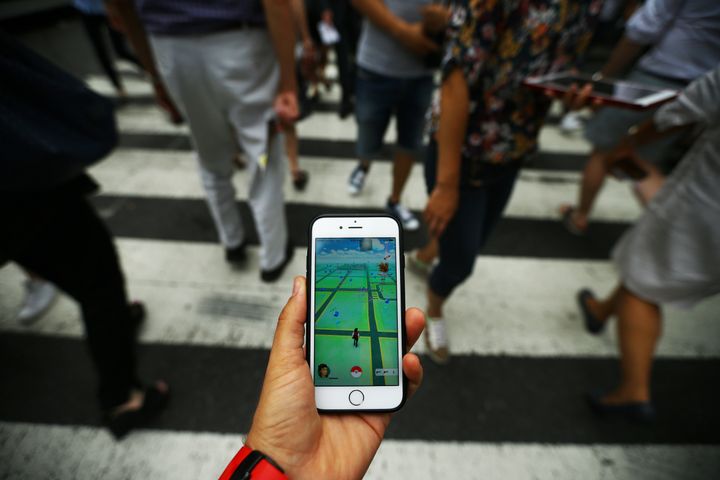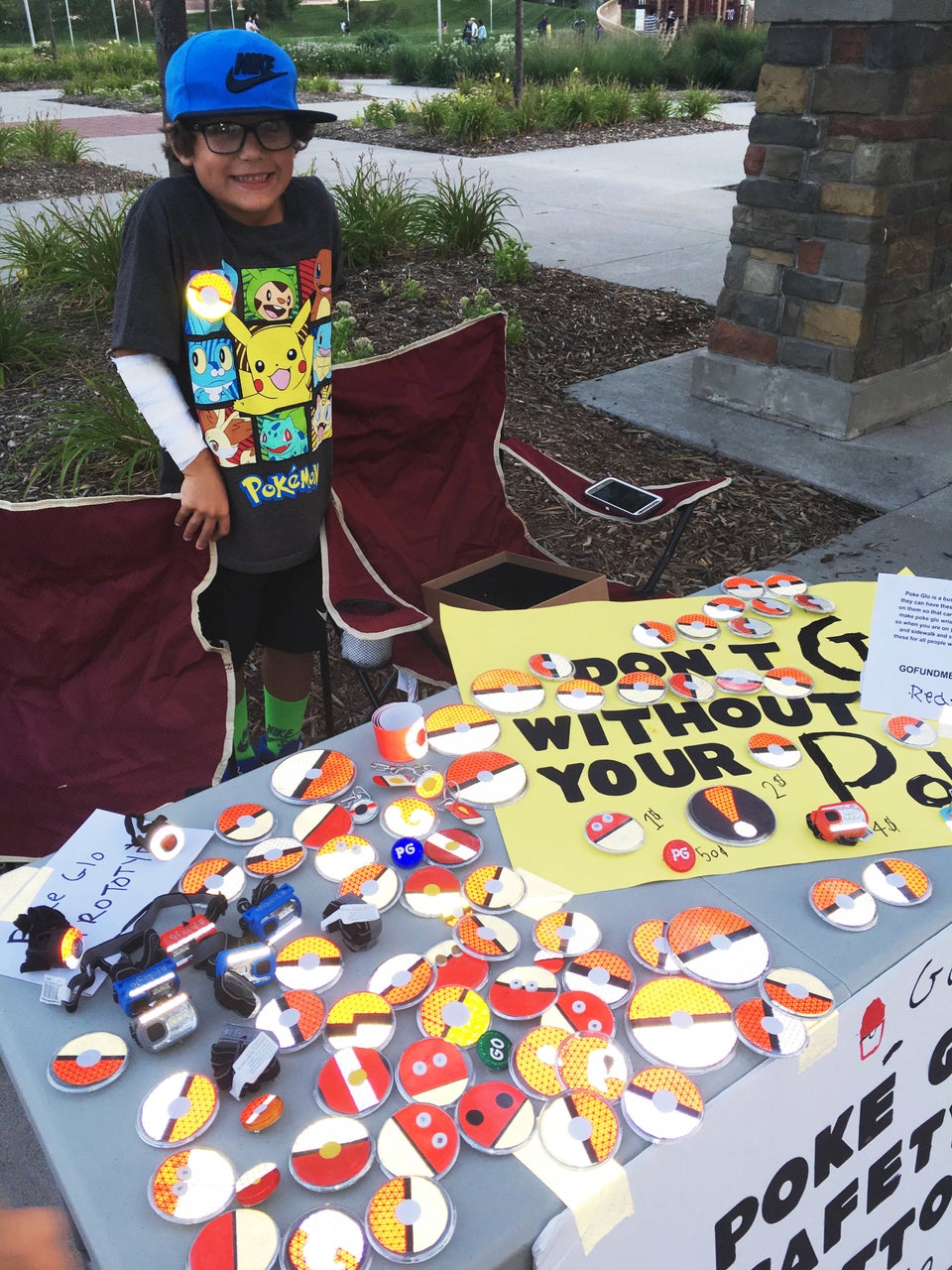
The streets, parks and sprawling strip malls of America’s cities and suburbs have become infested with a new urban species: the “Pokemon Go” player.
Ambling about with phones held aloft, these specimens have their eyes glued to their screens, seemingly incapable of viewing their surroundings. Their unpredictable roaming has brought chaos and scorn, and they’ve walked into ponds and police stations, off a cliff and into criminals’ traps.
I should know: I’m one of them, and I can’t help but get excited about the way this game ― often on the fritz and causing all sorts of trouble in the real world ― is breathing life into overlooked public spaces.
Millions of people are playing Nintendo’s augmented reality app, where you hunt for Pokemon as your on-screen character mirrors your real-world movements on a map.
As they play, human “trainers” wander around neighborhoods to search for the cartoon creatures, meeting other players by chance in public parks and gathering “Poke balls” at local historic and cultural landmarks. They’re going on long walks they’d never take otherwise, and adventuring into new parts of their cities.
That’s not all that remarkable, but it’s a total reversal from the way most Americans typically get around. For decades, cities have made accommodations for cars at the expense of walking, biking and public transit, creating streets where walking feels unsafe, unappealing or impractical.
There are obvious exceptions, like New York City, and Portland, Oregon, and officials have begun to take note of the economic, health and environmental value of walkable cities. But even if many people want to walk, most don’t.
More than 80 percent of all daily trips in the U.S. were taken by car in 2010, and only 13 percent of kids walked to elementary school and middle school in 2009, compared with 48 percent in 1969.
But what urban planners and forward-thinking mayors have struggled to accomplish with development or pedestrian-safety infrastructure, Nintendo seems to have done for thousands of places and millions of people in just a few days ― even if it doesn’t last.
John Conley, a 24-year-old gamer who uses the handle Apex Gaming, lives in Houston, and regularly drives to nature areas outside city limits to walk recreationally with his girlfriend. Since they started playing “Pokemon Go,” however, they’ve explored Houston on foot, checking out more than a dozen parks and neighborhoods they’d never seen.

A few days ago, Conley noticed the “Pokemon Go” effect at a small park with a pond and trail that he passes daily on his commute.
“To see it empty all the time, I would just think, ‘Oh man, it’s such a shame it’s not being put to use,’” he said. “But now it’s full of people.”
The app’s users are reclaiming public spaces for informal play, said Daniel Latorre, senior fellow of digital placemaking at the nonprofit Project for Public Spaces.
“Pokemon Go” gives people opportunities to walk around and have spontaneous encounters and social interactions, which can be one of the best parts of urban life.
“The reason why people in New York, or Paris, or other highly walkable cities, walk a lot is because they’re dense, and there’s a lot of things to do and the public space is quite lively,” Latorre said.
With Pokemon ― and people chasing them ― popping up unexpectedly on the landscape, even the most homogenous suburban cul-de-sac may offer a mini-digital dose of the excitement found strolling down a Parisian street.
”’Pokemon Go’ is this sort of, seemingly overnight activation of public space,” Latorre said. “One of the lessons that can be drawn from this is, well, wouldn’t it be great if some of these activated spaces that I’m sure are empty lots or boring parks … had more variety for play or social gathering spaces.”
Of course, many “Pokemon Go” users are drawn to the game for the nostalgia and the novelty ― not the walking ― and people have figured out hacks to play without moving, or they play while they drive, which is as dangerous as it sounds. So, when the novelty wears off, players may retreat back into their homes and cars.
For some, the game is fearful, not playful. Women have been bombarded by unwanted attention from male players who feel emboldened to pester them because they’re both looking for Pokemon, writes Slate’s Laura Hudson.
Bystanders who aren’t familiar with the game have called the police about “suspicious,” loitering players. Omari Akil writes that as a black man, he worries about being viewed as a threat and shot in a police encounter. For him, playing feels like putting his life in danger.
But the fact that a group of kids prompts neighbors to call the police says a lot more about our low regard for public space ― we think it’s weird when people use it ― than it does about the game. “Pokemon Go” makes you aware of some of the obstacles to having safe, enjoyable public space for everybody, whether by leading you to a Pokestop at an abandoned building, or making you navigate around a freeway interchange as a pedestrian.
The game has also caused players to wear out their welcome in public space, nearly taking over a tiny Australian suburb with huge crowds and playing at sacred sites like the 9/11 Memorial. Those and other disruptions have prompted frustrations with the game’s design as well as with those who are playing.

Teens in New Britain, Connecticut, have played the game at a local cemetery, a park after it closes for the night and a local World War II memorial. Mayor Erin Stewart (R) isn’t worried about it.
“While some people view it as kind of disrespecting the war memorial ... this could be a good thing, because these kids would never visit this memorial otherwise,” Stewart said.
The 29-year-old mayor got into the first Pokemon craze as a kid and has spent some time playing the new game. When the game caught on, Stewart and a friend saw an opportunity to sell their town and made maps of local “Pokemon Go” destinations, which proved popular with residents.
“The young people in our community are getting out, they’re getting off the couch and out of their houses and walking around town,” Stewart said, as three “Pokemon Go” players walked past her window. “They’re discovering a lot of new things that the city has, that they’ve never seen before.”

